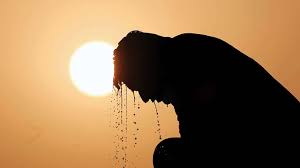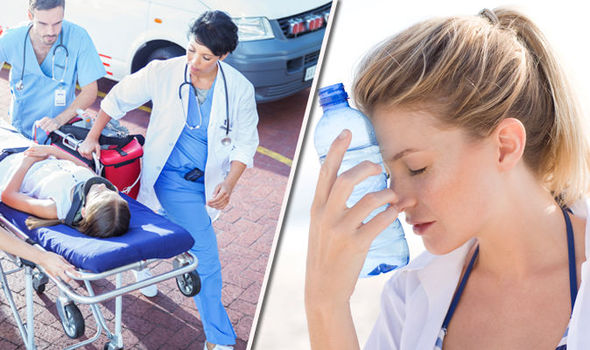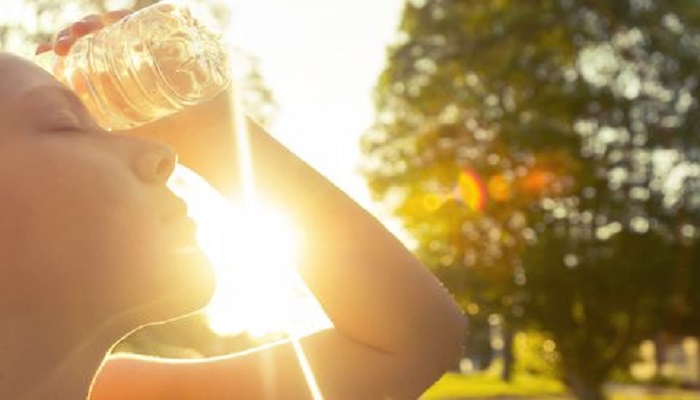Heat stroke is a condition when the body temperature rises more than what it can endure. Overheating usually happens when you have prolonged exposure to sun or doing a strenuous physical activity. To be exact, body temperature more than 104 F which is 40 degree Celsius causes heatstroke. The hypothalamus in our brain can feel the temperature fluctuations and can manage these changes within a certain limit. However, if the temperature is too high, it gets difficult for body to endure it. Therefore, heatstroke can damage brain, heart and may prove fatal as well if not treated right on time.
A little bit of global statistics
The global climate is changing rapidly. During the past decade, the world has experienced temperature rise and extremes due to global warming. Global statistic shows that in year 2015, about 1.75 million people experienced or affected by heat wave. Moreover, between the years 2000-2016, the number of people affected by heat wave has been recorder 1.25 million. In the year 2003, the extreme temperature and heat wave killed about 70,000 people in all Europe. Reports suggest that heat wave has caused 783 deaths of US workers over the course of few years and 69,374 cases of severe injuries.
The 21st century has experienced more frequent and prolonged heat waves. Not only has this cost life of many but also an economical burden as well. The weather extremes affect the labors and their working hours resulting in low industrial productivity.
As the temperature extremes are becoming more prolonged and severe, the experts fear that the death toll due to extreme temperatures can rise up to 1,52,000 Europeans annually, by the year 2100. The statistics are terrifying. Hopefully, the environment protection organizations may find a solution to overcome this issue.
Heat wave causes heat stroke. People working in fields or doing extreme physical activity are more likely to get affected. Therefore, the people must be aware of everything about a heat stroke. Heat stroke is an emergency. Delay in first aid to the person may result in severe consequences. Whenever, there is heat wave, taking precautionary steps is highly recommended to be safe and protect others as well.
Causes of heat stroke
Heat stroke occurs due to:
Temperature extreme
The classical or non-exertional heat stroke occurs when the person has prolonged exposure to high temperature. This high temperature elevates the core body temperature. Children while playing under hot sun and elderly people with weak immune system are more likely to get affected.

2. Physical activity
Farmer’s working in fields, masons and laborer may have a heat stroke while doing strenuous physical activity in hot weather.
3. Dressing
The type of dress you wear may add up to chances of getting a heat stroke. Always chose comfortable loose dress which helps in sweating and evaporative cooling.
4. Dehydration
If you don’t take enough amount of at least 8 glass of water daily, you are at more risks to have a heat stroke. Staying hydrated is a key to protect your body from temperature extremes.
5. Drugs and alcohol
Using drugs or alcohol affects your body’s ability to cope up with temperature fluctuations.
Risk factors
Having some conditions adds up to the risk factors for getting a heat stroke. These are:
- Age: Age is the major risk factors. Children have weak immune system and so is the case with elderly people. As the person ages, his immune system gets weak. Its ability to manage and tolerate infectious pathogens and temperature extremes decreases considerably.
- Exertion and physical activity: Farmers, labors, military personals, traffic police wardens who are working under high temperature and doing strenuous activity are at more risks of heat stroke.
- Congested environments: Humid air and congested environments increase the chances of heat stroke.
- Medications: If you are having some medical condition such as heart problems, asthma and hypertension, this increases the risk of heat stroke. Some medicines and stimulants such as caffeine and energy drinks already dehydrate the body. Therefore, take special care if you have any of these conditions.
Signs and symptoms
These are major signs of having a heat stroke:
- Raised body temperature (more than 104 F or 40 degree Celsius)
- Unconsciousness
- Agitation
- Altered mental state such as hallucination, seizure, slurred speech
- Altered sweating
- Nausea
- Shortness of breath
- Faster heart beat
- Headache
Complications
The symptoms of heat stroke may get complicated if not treated in time. This may cause:
1. Damage to vital organs
As soon as the core body temperature rises, it affects the vital organs such as brain, heart and kidney. Damage to these organs can lead the patient to coma
2. Death
The worst of heat stroke can cost a person his life. This is because; the vital organs cannot bear the temperature fluctuations.
First aid and treatment for heat stroke
As soon as you feel that someone is having a heat stroke, take immediate action. Call an ambulance and until the aid arrives, use first aid strategies. Any delay in first aid may worsen the situation.
The first aid involves:
- Take the person to cool, shady and airy place
- Remove the excess clothing such as cap and headscarf
- Use wet towel and rub it on hands and feet of person to lower the core body temperature
- For young person, you can use ice packs on his armpits, neck and back. These areas are rich in blood vessels which is why applying ice cubes here can lower the body temperature
- For old age people, using ice packs is not a suitable option. The sudden change in temperature may be dangerous. Using a wet towel is good choice.
Prevention is better than cure….
Heat stroke is not only predictable but also preventable. It’s always wise to choose the preventive option. Stay acknowledged via weather forecast. The months, June and July are even hotter than the other summer months. Moreover, there are chances of heat wave, so take extra care during these months.

1. Wear comfortable loose fitting dresses
Excess clothing and tight fitting dress is not a wise option to go for in summer months. So the better choice is loose fitting comfortable dresses which promote evaporative cooling under hot sun.
2. Use sunscreen
Always use sunglasses and sunscreen. This is to protect the eyes and skin from sunburn. Use a broad spectrum sun screen with at least 15-20 SPF range.
3. Stay hydrated
Drink plenty of water and other drink s such as fresh juices and shakes. Avoid using tea, coffee and instant energy drinks. Also, use more fruits and green vegetables, as these are good source of vitamins, minerals and are rich in water content.
4. Never ever leave someone in parked car
This is a dangerous ‘stunt’ I would say to leave someone in parked car whether it’s a human or a pet. Cars usually get overheated and person inside may suffocate. The car’s temperature can rise up to 20 degrees within 10 in hot temperature.
5. Take a break
When the temperature rise or in case of heat wave, try to take a break from work if possible. Avoid unnecessary traveling or travelling to those areas with hot climate. If you are doing some exercise or physical activity, try to make a schedule. This is to limit the working hours and avoid working during the noon when the temperature is highest.
Bottom line
Heat stroke is preventable. Everyone must know about the first aid and what to do in case of heat stroke. Be extra careful if you have some medical condition or have a previous history of heat stroke. Take a break and try a relaxing routine to prevent heat stroke.

